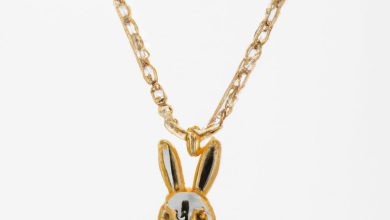The Difference Between Buck and Doe Rabbits

Rabbits are adorable and fluffy creatures that make excellent pets. However, it’s essential to know the difference between a buck and a doe rabbit, especially if you’re planning to breed them or take care of them as pets. In this article, Rabbitfact‘ll explore the significant differences between a buck and doe rabbit and why it’s essential to understand them.
Importance of Understanding the Difference

One of the main reasons why it’s crucial to know the difference between a buck and doe rabbit is because they have different physical characteristics and reproductive behaviors. Buck rabbits are male, while doe rabbits are female, and understanding the differences between the two can help you determine their sex, which is essential if you’re planning to breed them.
Moreover, if you own a pet rabbit, it’s essential to know the difference between them because it affects their behavior and health. For instance, understanding the differences in their nutritional requirements can help you provide them with the appropriate diet and prevent any health issues.
In conclusion, understanding the difference between a buck and doe rabbit is crucial for proper care and management. In the following sections, we’ll delve deeper into the physical characteristics, reproductive differences, behavioral differences, and health differences between the two.
Physical Characteristics

Rabbits come in different breeds, sizes, and colors. However, there are distinct physical characteristics that differentiate a buck from a doe rabbit.
Differences in Size and Weight
Buck rabbits are generally larger and heavier than doe rabbits. For instance, a fully grown buck rabbit can weigh between 5 to 10 pounds, while a doe rabbit can weigh between 4 to 8 pounds. However, there are some exceptions, depending on the breed of the rabbit.
Fur and Color Variations
Rabbit fur comes in different textures and colors, depending on the breed. Rex rabbits have short and dense fur, while Angora rabbits have long and silky fur. Additionally, rabbits can have various coat colors, including black, white, brown, and gray.
Sexual Dimorphism
One of the most significant physical differences between a buck and a doe rabbit is sexual dimorphism. Buck rabbits have a broader head, thicker neck, and muscular body, while doe rabbits have a smaller head, a less muscular body, and a broader pelvic region. Moreover, buck rabbits have visible testicles, while doe rabbits have a prominent reproductive opening.
In conclusion, understanding the physical differences between a buck and a doe rabbit is essential for breeders, pet owners, and enthusiasts. Knowing the differences in size, weight, fur, color, and sexual dimorphism can help you determine their sex, breed them, or provide them with proper care and management.
Reproductive Differences
Reproductive differences between buck and doe rabbits are significant, and understanding them is crucial if you’re planning to breed them or take care of them as pets.
Male and Female Reproductive Organs
Bucks have external genitals, which are visible on the underside of their bodies. They have a penis and two testicles, which are responsible for producing sperm. On the other hand, doe rabbits have internal genitals, which are not visible. They have a uterus, two ovaries, and a vagina.
Mating Behavior
Bucks and doe rabbits have different mating behaviors. Bucks are more aggressive and dominant, and they often initiate the mating process. They may also exhibit territorial behavior and become aggressive towards other bucks. In contrast, doe rabbits are more passive and submissive during mating. They may also exhibit nesting behavior before giving birth.
Gestation Period and Litter Size
The gestation period of a doe rabbit is around 28-31 days, after which she gives birth to a litter of kits. On average, a doe rabbit can give birth to six kits per litter, but the litter size can vary from one to 12. In contrast, bucks do not play any role in the gestation or delivery of kits.
In conclusion, understanding the reproductive differences between buck and doe rabbits is essential if you’re planning to breed them or take care of them as pets. Knowing their mating behaviors, gestation period, and litter size can help you provide them with the appropriate care and management.
Behavioral Differences
Rabbits have unique personalities, and their behavior can vary based on their gender. Understanding the behavioral differences between buck and doe rabbits can help you provide them with the appropriate environment and prevent any potential problems.
Dominance and Aggression Tendencies
Buck rabbits are naturally more dominant and aggressive than doe rabbits, and they tend to be territorial. They may exhibit aggressive behavior towards other rabbits or humans, especially during mating season. On the other hand, doe rabbits are generally more docile and submissive, and they rarely show aggression towards humans or other rabbits.
Territorial Behavior
As mentioned earlier, buck rabbits are territorial and may become aggressive towards other rabbits or humans if they feel threatened. It’s crucial to provide them with enough space and privacy to prevent any territorial behavior. Doe rabbits, on the other hand, are less territorial and prefer to live in groups.
Socialization and Interaction with Humans
Rabbits are social animals and enjoy interacting with humans and other rabbits. However, their socialization needs may vary based on their gender. Buck rabbits tend to be more independent and prefer to interact with humans on their terms, while doe rabbits enjoy spending time with humans and other rabbits. It’s essential to provide them with enough socialization to prevent any behavioral problems.
In conclusion, understanding the behavioral differences between buck and doe rabbits is crucial for providing them with the appropriate environment, preventing any potential problems, and ensuring their overall well-being.
Health Differences
Taking care of your pet rabbit’s health is essential for their well-being. Here are the significant health differences between a buck and doe rabbit.
Susceptibility to Certain Illnesses and Diseases
Buck and doe rabbits have different susceptibilities to certain illnesses and diseases. For instance, female rabbits are more prone to uterine cancer, while male rabbits are more prone to urinary tract problems. Therefore, it’s important to keep an eye on their health and take them to a veterinarian if they show any signs of illness.
Differences in Lifespan
The lifespan of a buck and doe rabbit also differs. Female rabbits tend to live longer than male rabbits, with an average lifespan of 6 to 8 years, while male rabbits have an average lifespan of 4 to 6 years. However, with proper care and a healthy diet, both male and female rabbits can live longer.
Nutritional Requirements
Buck and doe rabbits also have different nutritional requirements. For instance, female rabbits require more calcium and vitamin D to prevent uterine problems, while male rabbits need more protein to maintain their muscle mass. Therefore, it’s essential to provide them with the appropriate diet to prevent any health issues.
In conclusion, understanding the health differences between a buck and doe rabbit can help you provide them with proper care and prevent any health issues. Regular check-ups with a veterinarian, a healthy diet, and proper hygiene are crucial for their well-being.
Conclusion
In conclusion, understanding the difference between a buck and doe rabbit is essential for proper care and management. From their physical characteristics to their reproductive behaviors and health requirements, the differences between the two are significant and can impact their overall wellbeing.
Knowing the difference between a buck and doe rabbit can help you determine their sex, provide them with the appropriate diet and living conditions, prevent any health issues, and understand their behavior. It’s vital to remember that rabbits are social creatures that thrive on interaction, so providing them with a safe and comfortable environment is critical.
At rabbitfact.com, we strive to provide accurate and reliable information about rabbits to help you take care of your beloved pets. We hope this article has been informative and helpful. If you have any questions or comments, please feel free to contact us. Thank you for reading!
Conclusion: So above is the The Difference Between Buck and Doe Rabbits article. Hopefully with this article you can help you in life, always follow and read our good articles on the website: rabbitfact.com





